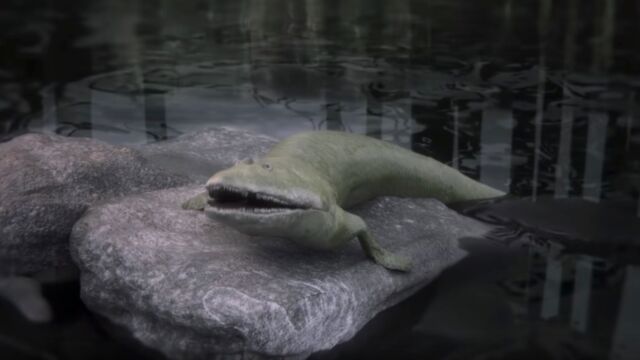A 375 million-year-old fossil may hold the secrets to our evolution

This fossil, which dates back around 375 million years, has skeletal characteristics resembling both fins and fingers and could be the missing evolutionary link in the transition from fish to tetrapods.
This discovery could prove incredibly useful for our understanding of how human beings evolved. The fossil, that was originally found in Miguasha, Canada, could explain how the human hand ended up evolving from fish fins.
Discover our latest podcast
Very unique bones
A few years ago, Australian and Canadian palaeontologists from Flinders University and the University of Quebec found an articulated specimen measuring 1.57 meters long known as the Elpistostege watsoni, which according to the experts, could be the most complete fossil of an elpistostegalian fish ever discovered.
More under this adMore under this adIn their study, which was published on 18th March in Nature magazine, the international team of researchers described the characteristics of this specimen, particularly focusing on its fins.
As they explain, this fish’ fins contained bones that are similar to those found in our arms, hands and fingers. According to their study, and despite this skeletal model which, at present, has a bone arrangement which is very similar to that of a tetrapod, the fins of this specimen also include lepidotrichia which are the dermal elements located at the distal margin of osteichthyan fins.
More under this adMore under this adThe missing evolutionary link?
Professor John Long, co-author of the study, revealed this discovery in a press release before going on to explain the initial results of their study further.
This is the first time that we have unequivocally discovered fingers locked in a fin with fin-rays in any known fish. The articulating digits in the fin are like the finger bones found in the hands of most animals.More under this adMore under this ad
This missing link appears to prove that some fish evolved and developed fingers similar to those belonging to humans before coming out of the water. It could even be this evolution that allowed prehistoric fish to come onto land.
If you want to see what this fish looked like, Australian scientists who were part of the research team have uploaded a video to YouTube in which they have reconstructed the Elpistostege watsoni and its exit from the water.
More under this adMore under this ad